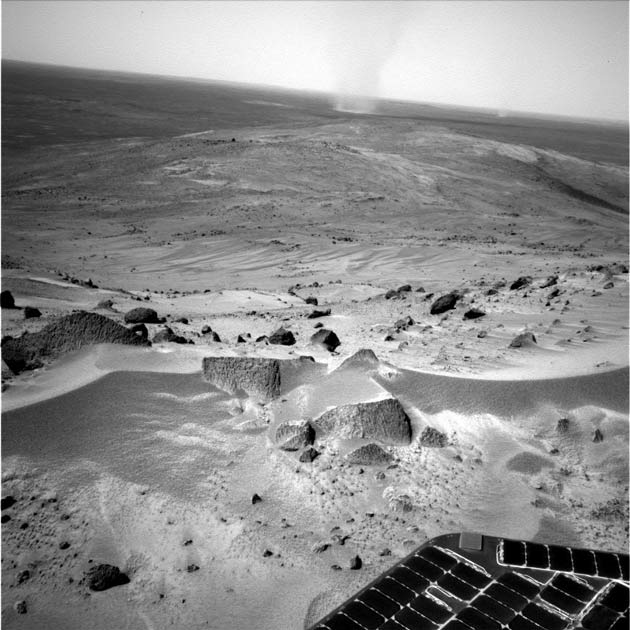Mars Rover Reaches Summit, and the View is Spectacular

Updated 12:32 p.m. ET Aug. 23
The Spirit Mars robot is closing in on a milestone moment in its roving history - wheeling up into position atop Husband Hill. Images being transmitted by Spirit show a breathtaking view from its vantage point.
"We are within sight of the summit," said Larry Crumpler, a member of the Mars rover science team. He is also research curator in volcanology and space sciences at the New Mexico Museum of Natural History and Science in Albuquerque.
"We can see 'Home Plate' now as well. The view is really opening up," Crumpler told SPACE.com. Mars rover science teams are prepared to do a "full summit campaign" of observations, he said.
Crumpler said in an earlier interview, once at the summit, one of the goals there will be to take a hard look at the basin to the south where one of the long term targets of interest -- Home Plate -- is located.
Many on the rover science team are hungry to get a look at the possibly layered terrain on the east side of the basin on the way to Home Plate - about a kilometer from Spirit's current location, and a trek that might take a few months, Crumpler noted.
NASA also released an animation of dust devils scooting across the Martian surface.
Spirit and its twin, Opportunity, reached Mars in January 2004 and are well beyond their initial mission timeline.
Crumpler said that Spirit's summit arrival includes a bit of jockeying around.
Get the Space.com Newsletter
Breaking space news, the latest updates on rocket launches, skywatching events and more!
Rover operators are scouting out the area for a prime picture-taking spot. It is from this slightly higher locale that the big and sweeping panorama images will be taken. Also, science will be carried out at this stop, Crumpler said.
Mars scientists hope to decipher the true makeup of Husband Hill. What exactly is this feature that Spirit is now perched atop?
"Gusev does not give up her secrets easily," said David Des Marais, an astrobiologist at NASA's Ames Research Center, Moffett Field, California.
Images taken by Spirit of the surrounding scene show that the summit area is quite flat, Des Marais told SPACE.com, and is decorated with several drift deposits. "Interesting...but no revelations so far," he said.
All of the hypotheses about the origin of Husband Hill are still quite alive and well, Des Marais noted. They include: 1) a volcanic mount; 2) ancient layered crater floor deposits; 3) remnant of an uplifted crater rim with a mixture of materials having various origins.
"We will probably examine both the sandy deposits and rocks in the summit area," Des Marais said. "Perhaps our greatest opportunity to understand how Husband Hill formed will come when we examine the rocky units that orbital images indicate might adorn the southern flanks of the hill."
- Dust Devils Race Across Mars in New Movie
- More about Husband Hill and the Rover
- Mars Rover Special Report
Join our Space Forums to keep talking space on the latest missions, night sky and more! And if you have a news tip, correction or comment, let us know at: community@space.com.

Leonard David is an award-winning space journalist who has been reporting on space activities for more than 50 years. Currently writing as Space.com's Space Insider Columnist among his other projects, Leonard has authored numerous books on space exploration, Mars missions and more, with his latest being "Moon Rush: The New Space Race" published in 2019 by National Geographic. He also wrote "Mars: Our Future on the Red Planet" released in 2016 by National Geographic. Leonard has served as a correspondent for SpaceNews, Scientific American and Aerospace America for the AIAA. He has received many awards, including the first Ordway Award for Sustained Excellence in Spaceflight History in 2015 at the AAS Wernher von Braun Memorial Symposium. You can find out Leonard's latest project at his website and on Twitter.









